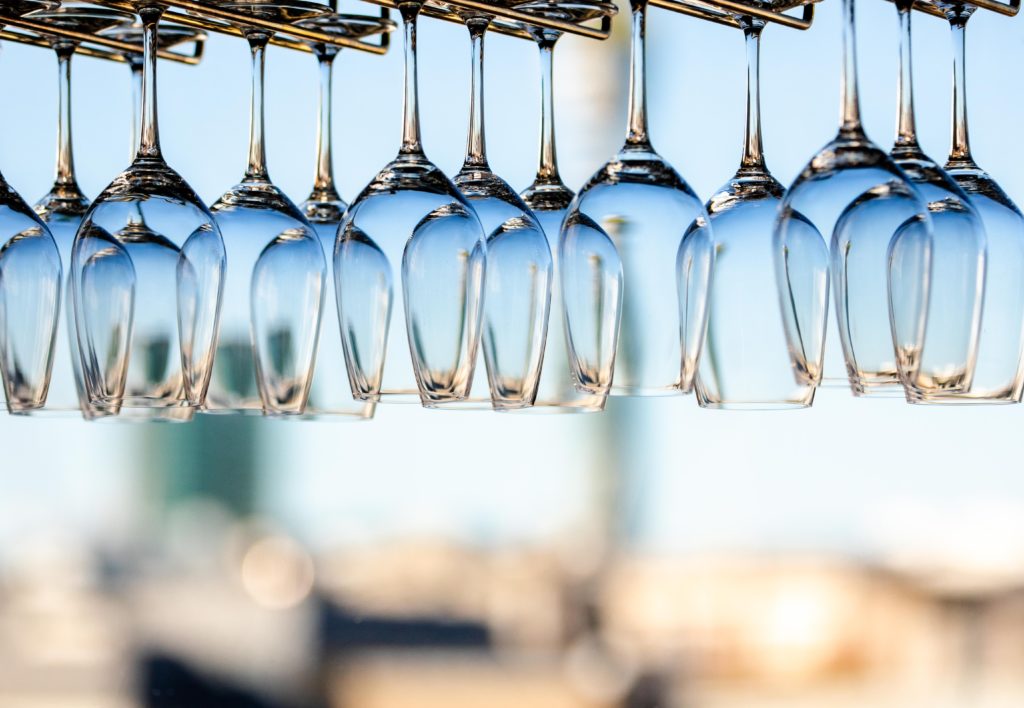Wine has been the UK’s favourite drink for a while, with at least 16% of wine drinkers firmly in favour of the English sparkling wine. Once something of an incongruity in what has been historically a nation of consumers rather than producers, English wine has come into its own over the years. With growing investment and serious viticulturists abound, the country is now producing world-class bubbles, winning recognitions, and earning comparisons with terroir Champenois.
It is the classic method of producing sparkling,the same way that champagne is made, which captures the popular imagination and represents the majority of English wine production. At about 65% of overall wine production in the UK, the classic method for sparkling wine accounts for two-thirds of all wine made in the country. The bubbles in this method come from a second fermentation in the bottle that makes the wine sparkle.
The English sparkling wine is today a go-to option in society events. The Chapel Down Brut Rosé, for example, was the drink of choice at the 2011 wedding of the Duke and Duchess of Cambridge. Her Majesty The Queen used to serve Hampshire-grown bottles of sparkling at her annual garden parties at Buckingham Palace, and brands like Nyetimber continue to dominate the summer social season.
English sparkling wines have a new hallmark
The UK is a wine country with over 3,500 hectares of vines and a production of 10.5 million bottles. The industry is dominated by the South of England and by sparkling wine. From Kent through Sussex, Hampshire, and Dorset, new vineyards for sparkling wine are being planted. In fact, the vineyard area for the three main sparkling wine grapes has more than tripled since 2010.
Now there is finally a quality hallmark called the Great British Classic Method for these sparkling wines made by the classic method in England and Wales. The hallmark is a step towards positively differentiating this flagship category of English wines and the hero style of production that has put the UK on the global wine map.
The quality hallmark was unveiled last year by the Wines of Great Britain (WineGB), the national association for the English and Welsh wine industry, following two years of deliberation with producers. The accompanying trade campaign aims to communicate and promote the qualities of the classic or traditional method of sparkling wine production in England and Wales.
The new hallmark defines some ground rules for the production of wines under the umbrella brand of Great British Classic Method, on a voluntary basis. Essentially, it can be added to English and Welsh PDO (Protected Designation of Origin) wines to indicate which wines have been made using the classic method.
To display the hallmark on bottles, the wine must fulfill three criteria:
- the grapes must have been grown in England or Wales
- a second fermentation must have taken place in the bottle
- a period of ageing on lees must take place before the release.
Reclaiming the term ‘British’
The Great British Classic Method hallmark is an opportunity to reclaim the term ‘Great Britain’ or ‘British’, which has long been used in export markets for wines made from imported grape concentrate and bottled in the UK. Meanwhile, the 2009 PDO/PGI wine classification meant that the ‘tank method’ for wine production – used for prosecco and some new fizzy English wines – has also been used to label sparkling wine. This failed to distinguish the more expensive method of second fermentation in the bottle, which is something the hallmark aims to clarify.
The quality hallmark is an initiative for the Wine GB to protect its halo. The association wants to use the halo to create a positive knock-on effect on other styles of wines, including still wines. In a competitive global industry, the hallmark will try to fulfill the need to speak about the distinct British style of sparkling winemaking and differentiate it as a category.
The Great British hallmark signifies a certain superiority, which will help maintain a price premium for the classic method wines and also strengthen the UK’s renown as a sustainable wine region. Equally importantly, the hallmark will speak to the quality of these distinctive English wines that are characterised by a glowing acidity, an orchard freshness, and a delicate balance.
It took years of consultation among the trade to settle on the nomenclature for the UK’s sparkling wine industry. Some of the names tossed around in the past were Britagne, English fizz, British fizz, and Quality Sparkling Wine, none of which caught on. But now, with the introduction of the Great British Classic Method brand and hallmark, the English and Welsh sparkling wine industry looks set to define a new chapter.

